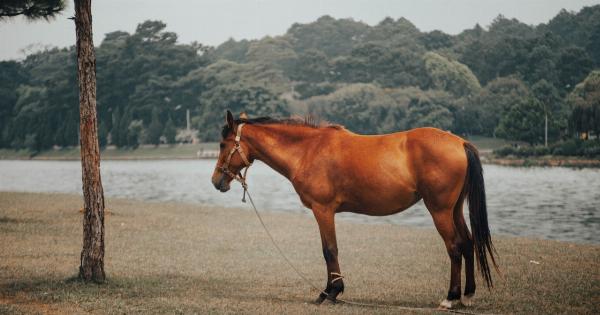Riding your dog without a leash may seem like a fun and exciting way to spend time with your furry friend, but it’s important to consider the safety and well-being of both your dog and others who may be around.
While it may be tempting to ride on your dog’s back, it’s important to remember that dogs are living creatures and not just a means of transportation.
Why it’s important to leash your dog
There are a number of reasons why it’s important to leash your dog. For starters, dogs are animals that have evolved to be active and explore their surroundings. They are not meant to be ridden like a horse or a bicycle.
Riding on your dog’s back can be extremely uncomfortable and even dangerous for the animal, leading to back pain, muscle strain, and even serious injury.
Furthermore, unleashing your dog in public areas, such as parks or streets, can put others at risk. Unleashed dogs may pose a threat to pedestrians, cyclists, or other animals by jumping on them or causing them to trip and fall.
They may also be more prone to getting lost or running away, which can lead to accidents or injuries.
How to train your dog to be comfortable on a leash
Training your dog to be comfortable on a leash is a crucial part of being a responsible pet owner. It can help ensure your dog’s safety and allow for enjoyable walks and outings together.
Here are some tips for training your dog to be comfortable on a leash:.
- Introduce the leash gradually: Begin with short, supervised walks around your home or yard, gradually increasing the length and frequency of the walks over time. Allow your dog to sniff and explore his surroundings while on the leash, but discourage pulling or excessive leash biting.
- Provide positive reinforcement: Use treats or praise to reward your dog for good behavior on the leash, such as walking calmly beside you or responding to commands. Consistency is key for effective training.
- Use the right equipment: Choose a leash that is comfortable for both you and your dog, and use a harness or collar that fits properly. Avoid using choke chains or prong collars, which can cause discomfort and harm to your dog.
- Be patient: Training your dog to be comfortable on a leash may take time and practice. Stay calm and patient, and avoid punishing or scolding your dog for mistakes. Positive reinforcement is the most effective training method.
Tips for safe dog riding
If you are interested in riding your dog in a safe and responsible manner, there are a few things to keep in mind:.
- Consult with your veterinarian: Before attempting to ride your dog, consult with your veterinarian to ensure that your dog is healthy enough for this type of activity. Some breeds may not be suitable for heavy riding due to their size or body structure.
- Use a proper riding harness: Choose a harness that is specifically designed for riding, and make sure it fits properly. The harness should distribute weight evenly across your dog’s body and avoid putting pressure on any one area.
- Start small: Begin with short, supervised rides to ensure that your dog is comfortable and able to handle the weight of a rider. Avoid overexertion or long rides until your dog has built up sufficient stamina and strength.
- Be gentle: Treat your dog with kindness and respect, and avoid any sudden movements or jerks that could cause injury or discomfort. Pay attention to your dog’s body language to ensure that he is enjoying the experience.
- Always use a safety leash: In case of emergency or unexpected movement, always use a leash to keep your dog under control and prevent runaway situations.
Conclusion
Riding your dog without a leash may seem like a fun and exciting way to bond with your pet, but it’s important to consider the potential risks and dangers involved.
By leashing your dog and training him to be comfortable on the leash, you can ensure a safe and enjoyable experience for both you and your furry friend. If you do choose to ride your dog, be sure to do so in a responsible and gentle manner, always using proper equipment and precautions.





























